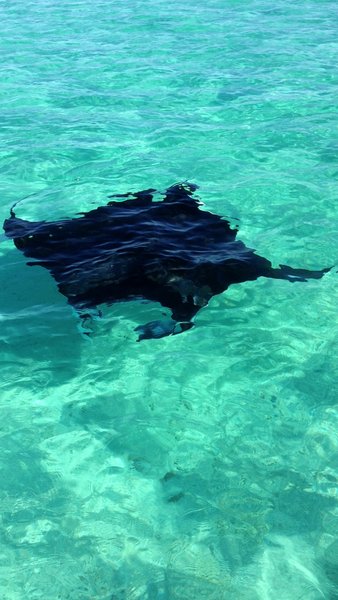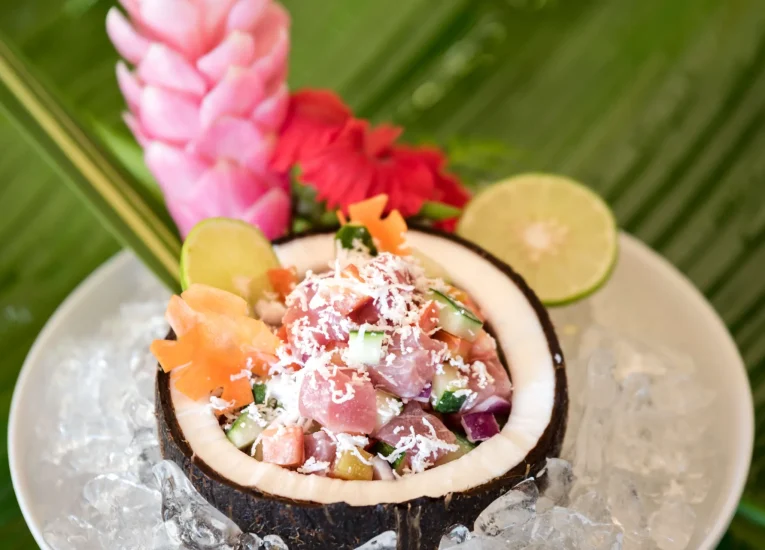Four Seasons Bora Bora: A Marine Biologist's Eco-Luxury Escape

After six months immersed in the vibrant chaos of the Coral Triangle, documenting its incredible biodiversity and the pressures it faces, I, Kai Ishikawa, a 35-year-old marine biologist and underwater photographer specializing in coral reef restoration, needed a sanctuary. Exhausted but invigorated, I sought not just luxury, but an eco-conscious escape. The Four Seasons Bora Bora, with its commitment to sustainability and active involvement in reef preservation, proved to be the perfect choice. This review explores my unique perspective, diving deep into the resort's coral gardening program, the manta ray haven of Anau reef, and the exquisite details that make this destination a true haven for ocean lovers and environmentally conscious travelers alike. It’s more than just a vacation; it's a chance to contribute to the health of our planet while indulging in unparalleled luxury.
Rebuilding Paradise: The Coral Gardening Program
One of the most compelling aspects of the Four Seasons Bora Bora is its dedication to coral reef restoration. The resort actively participates in a coral gardening program, a hands-on initiative that allows guests to contribute directly to the health of the local lagoon's ecosystem. For me, this was more than just an activity; it was an opportunity to apply my expertise and witness firsthand the impact of dedicated conservation efforts.
The scientific basis of the program is rooted in the principles of fragmentation and substrate attachment. Healthy coral fragments, sourced sustainably from existing colonies, are carefully attached to specifically designed coral frames. These frames, made from environmentally friendly materials, provide a stable base for the corals to grow. The process is remarkably simple, yet scientifically sound, ensuring optimal growth and survival rates for the transplanted corals. The positive impact of the program on the local lagoon is undeniable. Since its inception, the program has led to a noticeable increase in both fish biodiversity and coral cover. The newly planted corals provide shelter and sustenance for a variety of marine organisms, creating a thriving ecosystem where once there was degradation. Participating in the program felt profoundly rewarding, knowing I was contributing to something larger than myself, a tangible step towards coral reef restoration vacation.
Diving with Giants: Manta Rays at Anau Reef
Bora Bora diving at Anau reef is an experience that transcends mere sightseeing; it’s an immersion into a world of graceful giants. This site is renowned for its resident population of manta rays, majestic creatures that glide effortlessly through the water. As an underwater photographer, I was eager to capture their beauty and document their behavior.
What makes each manta ray unique is its spot pattern. Similar to fingerprints in humans, these patterns allow researchers to identify individual manta rays. During my dive, I was particularly thrilled to encounter "Spot," a frequently sighted manta ray easily recognizable by a cluster of distinct spots near its left gill slit. Spot and the other mantas at Anau reef are filter feeders, gracefully sweeping through the water column to capture plankton. Witnessing their feeding behavior, mouths agape as they filter the water, was a mesmerizing display of nature's ingenuity. The feeling of awe while observing these magnificent creatures is indescribable. You can dive into this experience with Bora Bora diving Anau reef.
Underwater Photography: Capturing the Reef's Soul
Equipped with my trusty Sony Alpha 7S III in a Nauticam underwater housing and a 16-35mm wide-angle lens, I set out to capture the soul of Bora Bora's underwater world. My goal was to convey the vibrancy of the coral reef ecosystems, emphasizing the intricate beauty and the fascinating symbiosis between marine organisms.
 Underwater photography presents unique challenges. Color correction is crucial, as water absorbs red light, leading to blue-tinted images. Careful adjustment of white balance and the use of strobes are essential to restore natural colors. Buoyancy control is paramount; maintaining a stable position prevents damage to the reef and ensures sharp, blur-free images. Capturing motion blur, especially when photographing fast-moving subjects like manta rays, requires a delicate balance of shutter speed and aperture. These challenges, however, only add to the reward of capturing the magic of the underwater world. For the best underwater camera for coral reef photography, consider a system similar to mine, but be prepared for the investment and learning curve!
Underwater photography presents unique challenges. Color correction is crucial, as water absorbs red light, leading to blue-tinted images. Careful adjustment of white balance and the use of strobes are essential to restore natural colors. Buoyancy control is paramount; maintaining a stable position prevents damage to the reef and ensures sharp, blur-free images. Capturing motion blur, especially when photographing fast-moving subjects like manta rays, requires a delicate balance of shutter speed and aperture. These challenges, however, only add to the reward of capturing the magic of the underwater world. For the best underwater camera for coral reef photography, consider a system similar to mine, but be prepared for the investment and learning curve!
A Taste of Paradise: Poisson Cru
No trip to French Polynesia is complete without indulging in poisson cru, a quintessential Polynesian dish. The Four Seasons Bora Bora's preparation of this classic dish is exceptional. Fresh, locally sourced tuna is marinated in lime juice, which "cooks" the fish through a process called denaturation, resulting in a tender and flavorful texture. The addition of creamy coconut milk adds a richness and sweetness that perfectly complements the acidity of the lime.
The freshness of the ingredients is key to the dish's success. The tuna is caught daily from the surrounding waters, and the coconuts are harvested from the resort's own grounds. Polynesian cuisine Bora Bora represents a profound connection to the island's resources and traditions. Poisson cru, a staple dish served during celebrations and everyday meals alike, embodies this connection.
Visual Symphony: The Essence of Bora Bora
The visual splendor of the Four Seasons Bora Bora is breathtaking. The turquoise waters of the lagoon shimmer under the tropical sun, contrasting with the lush greenery of the Motu. The vibrant colors of the coral reef create an underwater kaleidoscope of life.
Evenings bring a different kind of magic. The golden light at sunset reflects on the lagoon's surface, painting the water with fiery hues. The gentle lapping of waves against the Bora Bora overwater bungalow lulls you into a state of tranquility. The underwater world continues to teem with life, even after dark, offering a glimpse into a nocturnal realm of bioluminescent creatures and hunting predators.
A Commitment to Sustainability: Protecting Paradise
The Four Seasons Bora Bora's commitment to sustainability extends far beyond its coral gardening program. The resort has implemented a range of initiatives to minimize its environmental impact, including efforts to reduce plastic waste, conserve water, and promote energy efficiency.
The resort also actively supports local communities through employment and education programs. They partner with local marine biologists and conservation organizations, collaborating on research projects and educational outreach initiatives. This holistic approach to sustainability ensures that the resort's operations benefit both the environment and the local population. The Four Seasons is invested in sustainable tourism Bora Bora. The resort’s Four Seasons Bora Bora sustainable initiatives review shows a real investment in the local environment.
Protecting Our Oceans: A Call to Action
My experience at the Four Seasons Bora Bora was more than just a luxurious escape; it was a reminder of the beauty and fragility of our oceans. As a marine biologist, I urge you to support marine conservation efforts in any way you can.
Consider donating to organizations dedicated to reef restoration, such as the Coral Reef Alliance or local Polynesian conservation groups. Reduce your carbon footprint by making conscious choices in your daily life. Support businesses that prioritize sustainability. And when you travel, choose eco-conscious resorts like the Four Seasons Bora Bora that contribute to the preservation of marine ecosystems. By supporting conservation, you can contribute to a luxury vacation supporting marine conservation.
The future of our oceans depends on our collective action. Let us all do our part to protect these vital ecosystems for generations to come. Consider marine conservation volunteering Bora Bora to get involved.